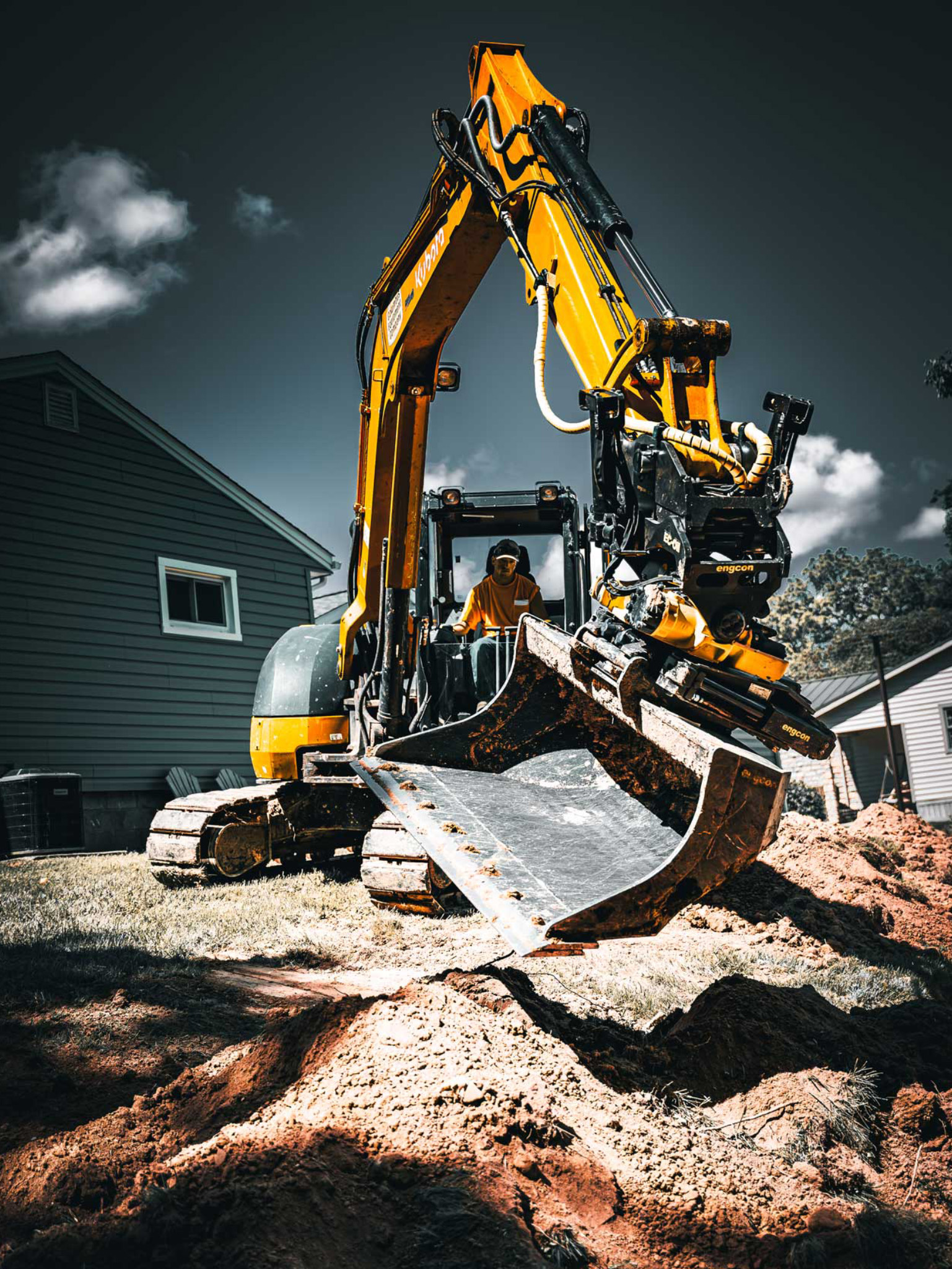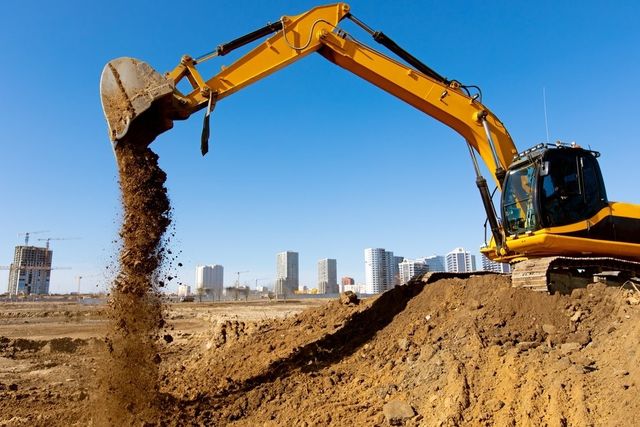Residential Excavating Ohio - Specialized Excavation for Ohio Houses
Introducing the Art of Excavation: Pro Tips for Safe and Efficient Digging
As dirt is transformed and earth is moved, the intricacies of excavation disclose themselves, demanding a keen understanding of devices, soil make-up, security methods, and environmental factors to consider. The know-how required to browse these aspects properly can imply the distinction in between an effective excavation project and a potential disaster.
Importance of Correct Tools
To ensure the safety and security and performance of any kind of excavation job, using the suitable devices is paramount. The right tools not just improve productivity but likewise mitigate threats connected with excavating. Excavation tasks differ in scope and intricacy, varying from small property landscaping work to large building endeavors. Despite the project dimension, having the correct equipment can make a substantial distinction in the outcome.
These flexible devices come in different dimensions to match different project requirements. Tiny excavators are excellent for smaller tasks, while larger excavators deal with more substantial projects effectively.
Apart from excavators, other essential tools includes dump trucks, excavators, and trenchers. Discard vehicles are essential for eliminating and transporting excavated materials, while plates are used for excavating deep and narrow trenches. Bulldozers succeed in tasks that need pressing large amounts of dirt or particles. By investing in the ideal devices, excavation projects can be finished securely, promptly, and with accuracy.
Understanding Dirt Make-up
An extensive understanding of soil composition is basic for carrying out excavation tasks with accuracy and security. Understanding the various kinds of dirt is critical as it straight affects excavation techniques, devices choice, and overall task efficiency.
Sand bits are the largest and offer good drain yet use little cohesion. Silt particles are smaller than sand yet larger than clay, providing moderate drainage and communication. Clay bits are the smallest and give high cohesion but inadequate water drainage. Organic matter, such as rotting plant material, affects dirt fertility and stability.
Before beginning excavation, carrying out dirt examinations to identify its composition and qualities is crucial. This information helps in picking the ideal devices, applying precaution, and creating excavation methods customized to the details dirt problems - lancaster trenching. By recognizing soil composition, excavation experts can boost job outcomes while making certain safety and adherence to ideal techniques
Safety Steps and Methods
Recognizing dirt composition is the cornerstone upon which safety actions and methods for excavation tasks are constructed, making certain the wellness of employees and the success of the undertaking. When it comes to safety and security during excavation, there are numerous vital steps that need to be executed to minimize risks and prevent crashes.
Most importantly, before any digging commences, a thorough assessment of the site should be carried out to identify any kind of prospective threats such as below ground energies, unpredictable soil problems, or neighboring structures that might position a danger. It is essential to have a proficient individual look after the excavation procedure to make sure that all safety methods are complied with strictly.
Furthermore, all employees entailed in the excavation has to be appropriately learnt safe excavating methods and the appropriate operation of tools. Individual protective tools (PPE) such as tough hats, high presence clothes, handwear covers, and safety boots must be put on in all times to reduce the threat of injuries. dump truck companies in ohio. Regular safety conferences and tool kit talks need to also be performed to keep all workers informed concerning potential hazards and reinforce risk-free job methods. By sticking why not try this out to these safety and security steps and protocols, excavation projects can be completed efficiently and see this site without event.
Efficient Excavation Planning
When starting an excavation project, meticulous preparation is vital to make sure performance, security, and effective results. Reliable excavation planning entails several key steps that are crucial for the smooth execution of the project. The very first step is to perform a detailed site evaluation to determine any possible risks, such as underground energies or unsteady soil problems. This details is crucial for developing a comprehensive excavation strategy that includes safety procedures and risk reduction methods.
Once the site evaluation is total, the following step is to create a clear timeline and timetable for the excavation tasks. This includes figuring out the sequence of tasks, tools requirements, and manpower allocation. Proper scheduling helps stay clear of hold-ups and guarantees that the task remains on track.

Furthermore, interaction amongst all employee is critical during the planning stage. Clear directives, regular updates, and reliable control are essential for an effective excavation project. By investing effort and time in careful planning, excavation groups can substantially enhance performance, lessen risks, and accomplish successful results.
Handling Ecological Factors To Consider
With increasing focus on ecological sustainability in building and construction techniques, handling ecological factors to consider has become an essential facet of excavation tasks. Excavation activities have the prospective to affect the surrounding environment with soil erosion, sediment runoff, environment disturbance, and contamination of water sources. To mitigate these risks, it is necessary to carry out finest methods that focus on ecological defense.

Moreover, proper waste administration is critical to stop dirt and water contamination. Executing treatments for the disposal of dangerous products, recycling of waste products, and minimizing making use of harmful chemicals can significantly minimize the environmental influence of excavation tasks. By incorporating these techniques right into excavation planning and implementation, building and construction companies can make certain that their projects are not only safe and effective but likewise environmentally accountable.
Final Thought
In verdict, understanding the art of excavation requires a complete understanding of appropriate devices, dirt composition, security actions, and efficient planning. By following these standards and thinking about environmental elements, excavations can be performed safely and effectively. It is important to prioritize security and efficiency in every excavating project to guarantee successful outcomes.
As soil is turned and earth is relocated, the complexities of excavation disclose themselves, requiring an eager understanding of devices, dirt make-up, security methods, and environmental considerations.To make certain the safety and efficiency of any excavation task, utilizing the appropriate devices is vital.A thorough understanding of dirt structure is fundamental for performing excavation projects with accuracy and safety. Comprehending the various types of dirt is important as it directly impacts excavation approaches, devices option, and her response total job efficiency. By comprehending dirt composition, excavation experts can improve project end results while guaranteeing safety and adherence to ideal practices.